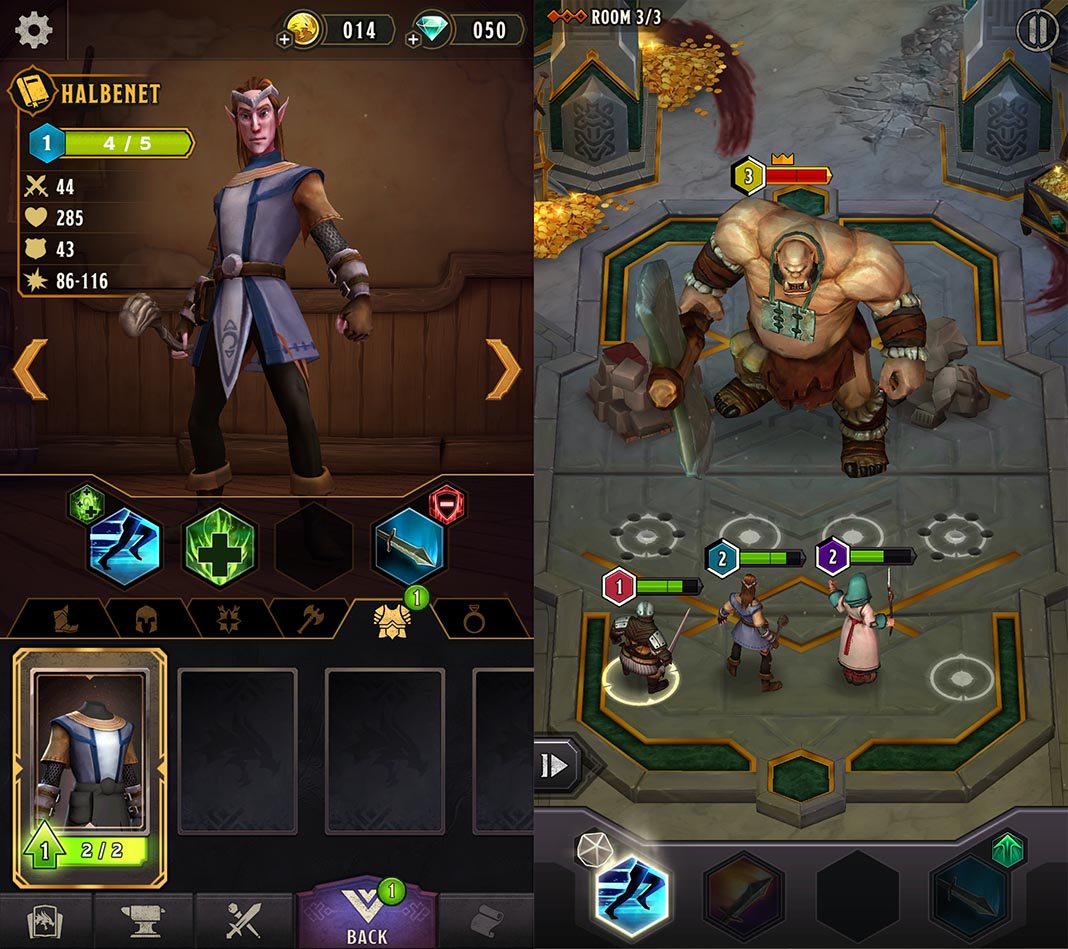


All the owlbear visuals and animations were designed with this size in mind. Heroes take up 1×1 squares on the 4×4 grid, and an owlbear was set as a 2×1 rectangle. Since the gameplay was focused on tactical combat on a map, the visuals of the game were designed to maximize the playable space of the battlefield, while having enough detailed heroes and monsters on screen at a high enough resolution to keep combat mechanically and visually interesting.įrom a practical point of view, this is what determined how many owlbears are too many owlbears. When the Ludia team wasn’t developing the paper prototype, they were building the actual mobile game. Two dice rolls and two +6 bonuses later, the dragon lay dead, and it was time to deal out the treasure. With time in the meeting running out and only a single surviving fighter facing a wounded green dragon, the company president looked at me and said, “Wouldn’t it make more sense if my fighter drank the potion of giant’s strength and attacked in the same turn? How long should it really take to drink a potion and swing the axe?” I nodded agreement. When we presented the latest version of the prototype to Ludia management, they also weighed in on the rules. (Should normal owlbears only attack randomly, and miniboss owlbears focus on the biggest threats first?) These kinds of discussions are very familiar at the D&D table, where there’s always a bit of rules lawyering and negotiating between players and the DM about how the rules should really be applied. There was a lot of room for rules experimentation and debate, like damage ranges, (Should a battle axe deal more average damage than a single owlbear bite?) initiative order (all owlbears, then heroes, or mix the order?), and even basic AI rules. Sometimes you’d find just a few owlbears. After clearing a room, we would choose between two decks to draw the next encounter, like picking a door to enter. We’d roll initiative, choose attacks and targets, then roll attacks and damage. The starting rules were simple: We’d have four basic heroes – fighter, cleric, wizard, and rogue – positioned at the bottom of a battle map with a random assortment of monsters arrayed before them.
#Warriors of waterdeep secret room series#
We used a series of paper prototypes – character sheets, random encounter decks, miniatures grabbed from 3 rd Edition Basic Game boxed sets, and a lot of dice – to test basic game mechanics and find the fun. All the early games were played with pencil and paper. Warriors of Waterdeep didn’t start in a forest – it started at a conference room table. The story of Warriors of Waterdeep is the story of how we answered that question for owlbears and then for kobolds, mind flayers, and dragons. The short answer to the question is… six.

First of all, what does it even mean? How many owlbears can virtually fit on a mobile phone screen? What kind of phone? Portrait or landscape? Do the owlbears show up all at once, or one at a time? Where are they – in a forest? Can we design a cool forest environment? Can you hear the owlbear screeches and see their feathers? Who are they fighting? What are their damage dice? Did the Dungeon Master give the players any clues, or was it all an ambush? What kind of heroes can stand up to owlbears? What’s the expected survival rate for halflings versus owlbears? What if they are very high-level halfling fighters, with support from clerics and wizards support? Developing Warriors of Waterdeep, an official Dungeons & Dragons mobile game, at Ludia boiled down to answering one simple question: How many owlbears is too many owlbears?


 0 kommentar(er)
0 kommentar(er)
